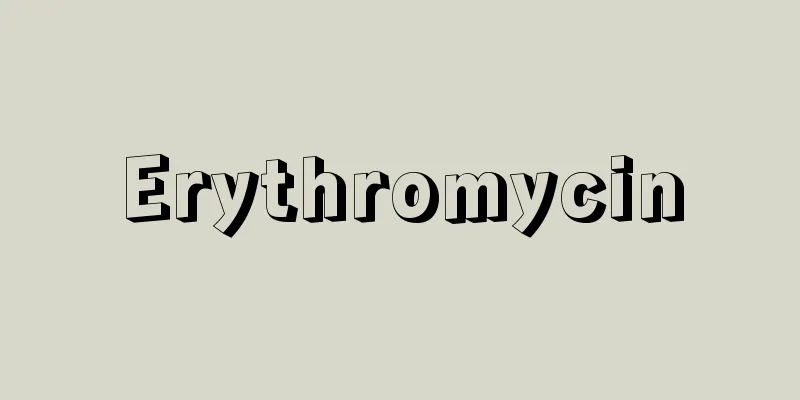Sugawara Denju Tenarai Kagami - Sugawara Denju Tenarai Kagami

|
Joruri Gidayubushi. Historical piece. Five acts. A collaboration between Takeda Izumo, Namiki Senryu, Miyoshi Shoraku, and Takeda Koizumo. First performed at the Takemotoza Theater in Osaka in August 1746 (Enkyo 3). A mix of historical tales, legends, and folk beliefs about Sugawara no Michizane, this piece is based on Chikamatsu Monzaemon's Tenjinki. It is considered one of the three great masterpieces of Joruri, along with Kanadehon Chushingura and Yoshitsune Senbonzakura, both of which were written by the same collaborators. It was adapted into a kabuki play in the autumn of the same year it premiered, and has since become a popular representative piece in both puppet theater and puppet theater. [Toshiaki Matsui] First-dan: Ouchi, Kamozutsumi, Sugawara-kan (brushwork instruction), outside the same schoolSugawara no Michizane, the Minister of the Right, also known as Kanshojo, suppressed the rebellion of the Minister of the Left, Fujiwara no Tokihira, incurring his wrath. He was accused of treason and exiled to Tsukushi after his daughter, Princess Kariya, and the Emperor's Prince Tokiyo had a secret rendezvous at Kamo-tsutsumi, facilitated by the Toneri couple Sakuramaru and Yae. Takebe Genzo, who was taught the Sugawara clan's secret calligraphy by Michizane, and his wife Tonami, together with their wife Tonami, protected Michizane's only son, Sugawara Shusai, from Tokihira's group and retreated. [Toshiaki Matsui] Stage 2: Sweet exchange of words of wisdom, Yasuinohama Beach, and Kakujukan (Domyoji Temple)Saisei and Kariyahime escape under the protection of Sakuramaru, who is dressed as a candy seller. On his way to Tsukushi, Michizane visits his aunt Kakuju in Haji Village, Kawachi Province, on the sympathy of his guardian, the magistrate Terukuni. Kakuju's son-in-law, Sukune Taro, and his father, Haji Hyoe, ally with Tokihira and try to kill Michizane, but Michizane is saved by the miracle of a handmade wooden statue, and leaves Kariyahime to depart. [Toshiaki Matsui] Third stage: Yoshida Shrine (carriage pull) and Sada Village (celebration)Sakuramaru is a triplet brother with Umeomaru, a servant of the Sugawara clan, and Matsuomaru, a servant of Tokihira. Umeo and Sakuramaru attack Tokihira's carriage on a pilgrimage to the Yoshida Shrine, but are stopped by Matsuo. The three brothers gather together, each with their wives, to celebrate the 70th birthday of their father, Shiratayu, who lives in Sata Village. Matsuo is disowned by his father of his own volition, and Sakuramaru commits seppuku (committing seppuku) for the crime of exiling Michizane. [Toshiaki Matsui] 4th Dan - Place of detention (Tenpaizan), Kitasaga, TerakoyaMichizane, who is exiled in Tsukushi, is enraged when he hears the news of Tokihira's rebellion, and transforms into a thunder god and flies off to the capital. Michizane's wife, Sonomae, is attacked by Tokihira's men at her hideout in Kitasaga, and Yae fights them off and is killed, but a mountain ascetic appears and saves her. Takebe Genzo, who runs a temple school in the village of Seryo, is ordered by Tokihira to kill the head of Suga Shusai, and offers Kotaro, who has just become his disciple, as a substitute, but Matsuo, who is tasked with inspecting the head, recognizes it as the real head and leaves. After that, he returns with his wife Chiyo and tells her that Kotaro is his own son and that he purposely made him his disciple to be a substitute, and introduces the Odai whom he saved disguised as a mountain ascetic. [Toshiaki Matsui] 5th Dan - OuchiTokihira was destroyed by the god of thunder, and Michizane was enshrined as a god of heaven. The play is characterized by the depiction of three different farewells between parent and child in the second, third, and fourth act scenes, and is often performed independently. "Domyouji" depicts the human sorrow of the saint Sugawara no Michizane in a deep and fantastical tale, and is one of the most difficult pieces in Gidayu, while the roles of the Prime Minister and Kakuju are considered to be among the most difficult in Kabuki. "Ka no Iwai" is a scene full of elegiac poetry, in which the beautiful young man Sakuramaru dies on a farm in the beautiful spring, and is also a highlight for Shirotayu. "Terakoya" is dramatically excellent, with the tension of the head inspection, the tragic feeling of Matsuo revealing his true feelings, and the sadness of the final act where everyone mourns Kotaro, and is one of the most frequently performed masterpieces in classical drama. In addition, "Kurumabiki" in the third act is outstanding in Kabuki for its unified rough acting throughout the entire play, making it a scene rich in stylized beauty. Each has its own highlights, such as the atmospheric Kamo Dam and the elegant Calligraphy Technique Transmission. [Toshiaki Matsui] "Complete Collection of Japanese Classical Literature 45: Joruri Collection" (1971, Shogakukan), edited and translated by Masataka Yokoyama Source: Shogakukan Encyclopedia Nipponica About Encyclopedia Nipponica Information | Legend |
|
浄瑠璃義太夫節(じょうるりぎだゆうぶし)。時代物。5段。竹田出雲(いずも)・並木千柳(せんりゅう)・三好松洛(しょうらく)・竹田小出雲合作。1746年(延享3)8月大坂・竹本座初演。菅原道真(みちざね)の史譚(したん)・伝説・民間信仰などを取り混ぜ、近松門左衛門の『天神記(てんじんき)』をもとに脚色。同じ合作者による『仮名手本忠臣蔵(かなでほんちゅうしんぐら)』『義経千本桜(よしつねせんぼんざくら)』とともに浄瑠璃の三大傑作とされる。初演の同年秋には歌舞伎(かぶき)化、その後も人形浄瑠璃と両方で代表的人気演目になっている。 [松井俊諭] 初段―大内(おおうち)・加茂堤(かもづつみ)・菅原館(やかた)(筆法伝授)・同門外菅丞相(かんしょうじょう)こと右大臣菅原道真は、左大臣藤原時平(しへい)の暴逆を制して恨みを買い、息女苅屋(かりや)姫と皇帝斎世(ときよ)親王が舎人(とねり)桜丸・八重夫婦の取り持ちで加茂堤で密会したのを種に、謀反と讒言(ざんげん)され、筑紫(つくし)へ流罪と決まる。道真から菅家秘法の書道を伝授された武部(たけべ)源蔵は、女房戸浪(となみ)とともに、道真の一子菅秀才(かんしゅうさい)を時平一味から守って立ち退く。 [松井俊諭] 二段―道行詞(ことば)の甘替(あまいかえ)・安井の浜・覚寿(かくじゅ)館(道明寺(どうみょうじ))斎世と苅屋姫は飴屋(あめや)姿の桜丸に守られて落ち延びる。筑紫へ向かう道真は警護の役人判官代(はんがんだい)輝国(てるくに)の情けで、河内国(かわちのくに)土師(はじ)の里の伯母覚寿を訪れる。覚寿の婿宿禰(すくね)太郎とその父土師兵衛(はじのひょうえ)は時平にくみし、道真の命をねらうが、道真は手製の木像の奇跡に救われ、苅屋姫に別れて立ち去る。 [松井俊諭] 三段―吉田社頭(車引(くるまびき))・佐太村(賀の祝)桜丸は菅家の舎人梅王丸、時平の舎人松王丸と三つ子の兄弟で、梅王・桜丸は吉田社参詣(さんけい)の時平の車を襲うが、松王に妨げられる。三兄弟は佐太村に住む父白太夫(しらたゆう)の70歳の賀の祝いに、それぞれ女房を連れて集まるが、松王は自ら望んで父に勘当され、桜丸は道真流罪の責を負って切腹する。 [松井俊諭] 四段―配所(天拝山(てんぱいざん))・北嵯峨(きたさが)・寺子屋筑紫の配所の道真は時平反逆の報を聞いて激怒し、雷神と化して都へ飛び去る。道真の御台所(みだいどころ)園生の前(そのうのまえ)は北嵯峨の隠れ家を時平一味に襲われ、八重はこれと戦って討ち死にするが、山伏が現れて御台を助ける。芹生(せりょう)の里で寺子屋を営む武部源蔵は時平方に菅秀才の首を討てと命じられ、弟子入りしたばかりの小太郎を身替りにたてるが、首実検の役の松王は実の首と認めて帰ったあと、女房千代とともにふたたび訪れ、小太郎こそわが子で身替りのためわざと入門させたことを語り、自分が山伏に扮(ふん)して救った御台を引き合わせる。 [松井俊諭] 五段―大内時平は雷神に滅ぼされ、道真は天神として祀(まつ)られる。 二、三、四の各段の切(きり)場で、3通りの親子の別れを書き分けているのが特色で、独立しての上演も多い。「道明寺」は、幻想的な物語のなかに、聖者菅公の人間的な悲しみを重厚に描き、義太夫では屈指の難曲、歌舞伎でも丞相や覚寿は最高級の難役とされる。「賀の祝」は、うららかな春の農家で美しい若衆桜丸が死んでゆく、哀切な詩情に富んだ場面で、白太夫の見せ場でもある。「寺子屋」は、首実検の緊迫感や松王の本心吐露の悲壮味、一同が小太郎を弔う段切れの哀感など、劇的にきわめて優れ、古典劇中有数の傑作として上演回数ももっとも多い。ほかに三段目口の「車引」は、歌舞伎では全編を荒事(あらごと)で統一した演出が傑出し、様式美豊かな一幕となっている。情緒のある「加茂堤」、格調高い「筆法伝授」など、それぞれに見どころがある。 [松井俊諭] 『横山正校注・訳『日本古典文学全集45 浄瑠璃集』(1971・小学館)』 出典 小学館 日本大百科全書(ニッポニカ)日本大百科全書(ニッポニカ)について 情報 | 凡例 |
<<: Sugawara no Koreyoshi - Sugawara no Koreyoshi
Recommend
Foggia - Foggia (English spelling)
The capital of Foggia Province in Puglia, souther...
Shimoyama Incident
On July 5, 1949, Shimoyama Sadanori, the first pr...
Key kid - Key kid
This refers to children and students who are left ...
Caladium bicolor (English spelling)
… [Takabayashi Masatoshi]. … *Some of the termino...
Economic power - Kyogo
1451-1492 A monk from the Muromachi period. Born ...
Kaiga (English spelling) jie-hua
One of the techniques of Oriental painting. Since ...
Béjart family - Béjart Ikka (English spelling)
Brothers and sisters who were actors active in 17t...
Shadow band
During a total solar eclipse (→ total eclipse), ju...
Miwa [town] - Miwa
A former town in Asakura County, central Fukuoka P...
Lebak
…He served as a government official in the East I...
Zeltsack - Zeltsack (English spelling) German
A type of mountaineering equipment. A simple, sma...
Conveyor Systems
〘noun〙 (conveyer system) 1. A transportation syste...
Institutionalism
… In this situation, the individualistic and stat...
balloon-flower
…As the scientific name Platycodon (broad bell) s...
Dunhuang Studies (English: Dunhuang Studies)
A discipline that studies ancient documents discov...









